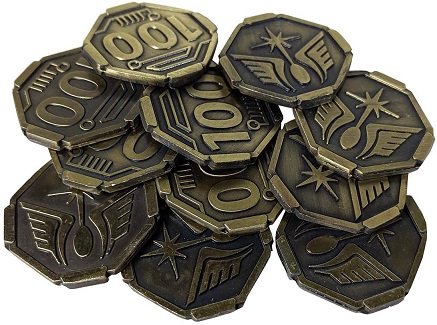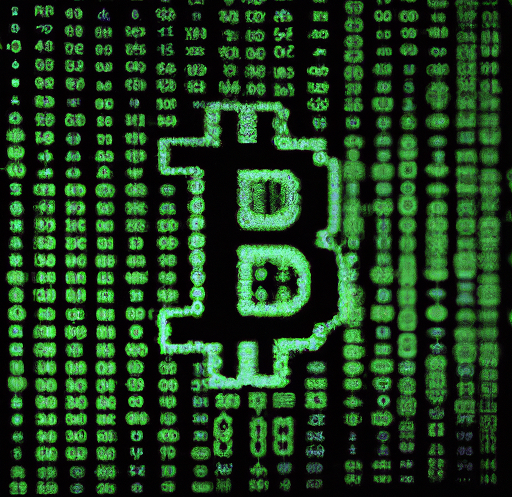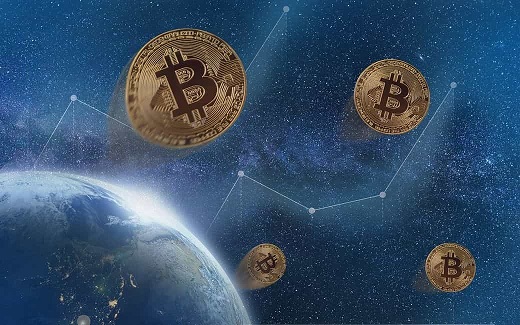Tokenomics Part 2

What gives a derivative value?
Many would say that what gives a derivative value is the underlying asset it represents, but we've already known for decades that this isn't entirely true. When we look at gold, silver, and other precious metals, the idea falls flat on its face.
That's because when it comes to PMs we've seen firsthand how the derivative is actually the main asset and often ends up determining the price of physical gold, silver, etc. How is that possible? Well it's possible through manipulation, for one, but also there is a very big variable most people seem to gloss over:
DIGITAL ASSET.
"Paper" gold has value because it turns a precious asset that is heavy and hard to divide into a derivative asset that is infinitely divisible and light as a feather. Once the Internet rolled around these paper assets became digital assets: giving them even more value because they exist on the Internet and multiplying their mobility even further. This is why the derivative can set the price of the underlying asset: we live in a digital age and the digital version of the thing has more demand than the physical asset. It's a matter of convenience and pure logistics. Simple as that.

Now do Bitcoin!
So now people have gotten it into their heads that a Bitcoin EFT derivative is super valuable, and the logic they are using is, "Well, just look at gold! It was valuable for gold it must be valuable to Bitcoin as well!" However, this is only slightly true, because people's ignorance of why the gold derivative is valuable eludes them to the truth.
If speculators actually realized that digital gold has value because we live in a digital age and gold is a physical asset... it's not very difficult to see that a Bitcoin derivative has NONE of those attributes. Why would we allow an institution to create a digital asset that represents Bitcoin when all they are going to do (in theory) is back the derivative 1 to 1 with actual Bitcoin? How is that different from an exchange that promises to pay you back? It's really not much different at all, while the same can not be said for gold and silver derivatives because those are physical assets.
But that's just not how the legacy economy sees it.
The dinosaurs in charge of these institutions can only see one step in front of themselves. They have no vision, and they are impatient. They see their money as sidelined and cut off from the market and they want to get in and wet their beak on the action ASAP.
So even if a BTC ETF does have a bit of value today because legally a lot of institutional money is not allowed to invest in BTC (but would be able to invest in an ETF representing BTC), in the long-run a BTC ETF has an intrinsic value of zero, and as crypto infrastructure gets built up, the need for an ETF vanishes (because BTC is already digital and more secure than any ETF could possibly hope to be). Meaning that it is all but guaranteed that at some point investors are going to holding the bag on ETFs and it is quite unclear if they will actually ever get their BTC back. We've all seen these solvency issues play out a dozen times now. Why would ETFs be any different?
It is becoming crystal clear that the "custodians" of Bitcoin are not custodians of Bitcoin at all. They are LEGALLY the OWNERS of the Bitcoin. A custodian simply promises to pay you back, and they are legally allowed to break that promise in the event of multiple chapters of bankruptcy. Never in a million years did I think the 2022 bear market would play out this way.
I'm on record as saying that institutional investors have diamond hands and wouldn't make the same mistakes as retail. LOL! Boy what a wake up call. These people are EVEN WORSE than retail. I thought this bear market was going to be riddled with hacks like the previous ones. Nope, security was good... it was the people in charge who were DEGEN gambling with customer money that ruined it for everyone this time. Did not have that on my Bingo card. All the biggest hits to crypto over the last year were all centralized systemic failures, not security issues. Wild! But I guess we can count this as progress? Silver lining.

When are derivatives appropriate?
Well they are appropriate when the derivative can actually do something that the primary asset can not do. I'm a bit fascinated with the idea of crypto derivatives at this point. I think that crypto has only scratched the surface of what is possible. People like @taskmaster4450 have really shown me there is this entire financial world out there that most people aren't even looking at.
Bonds as NFTs are a big one.
And the things that crypto can do with bonds are a thousand times more complex and interesting than the legacy economy. A bond interacting with programmable money is much more interesting than a bond issued by the American government within a system that existed before the Internet.
Government bonds are boring.
You give the government money... and they promise to give you a little bit of yield on the investment... in the government. First off let me just say that on a political level investing in the government is possibly one of the most asshole things you could do. You're happy with how the government spends money? Oh wait you don't care you just want the yield: I forgot. Capitalism.
People like @khaleelkazi have shown me that bonds can actually be used to stabilize crypto economies and even sell off bad debt on collateralized loan platforms. That's way more interesting than sending your money to the Empire for a 5% return and hoping inflation ends up being lower than that.

Magitek?
Within the context of the token I'd like to bring to life one day... Basically all the assets on the platform would be derivative assets except for the primary governance token (MANA). Why have derivative assets that represent Hive and HBD on a platform built directly on Hive? Well, the platform has unilateral control over the derivative assets it creates, and very little control over Hive/HBD until it controls the keys to those wallets... which seems like a pretty huge liability in my opinion. What if those wallets got hacked? Not good.
ICE!
The thing I wanted to focus on the most here was ICE, linking it back to my previous part 1 post and to the beginning of this article as well. ICE is a derivative that could be created in a handful of ways. Initially I was thinking there would only be one way (the way that DAI and MakerDAO do it) but now I realize that this is limited-scope thinking.
DAI and MAKERDAO
How is DAI stable coin able to maintain such a stable price to the dollar? After theory-crafting derivatives so much I'm actually a bit skeptical at this point. When MakerDAO and DAI first launched there was no ICO, and the vast majority of sales were to VCs and other institutional investors (A16Z is a big stake holder). Given this knowledge... isn't it reasonable to assume that perhaps that gargantuan stake holders (and the dev team being paid by them) used that money to stabilize the asset? I'm beginning to think this is exactly what happened. They used centralized funding to maintain the peg.
Because when DAI first launched... the only reason to hold it was if you were bearish on crypto and keeping money within stable coins. DEFI AMM yield farms did not exist yet, and DAI was constantly hovering around 98 cents instead of $1 because there was far greater incentive to use DAI to long Ethereum and create a nested long position where DAI was being dumped for ETH and then that ETH was used as collateral to mint more DAI. I was doing it... a lot of people were doing it. I got burned pretty hard twice during flash-crashes and high network fees that bogged down Ethereum. I also scored a big win after that (going long at $230 Ethereum wondering if it would crash again... it didn't).
So how was DAI able to maintain stability if the only reason to mint it was to dump it? Essentially what ended up happening is they rug-pulled users that had debt positions by retroactively driving up the interest rate on loans to near 10%... which is absolutely absurd within the context of all DAI being overcollateralized by 300% on average. I get the feeling those VCs were tired of pumping in their own money at 98 cents in order to keep the thing afloat, and the only want to stem that bleeding was to impose an artificial interest rate under the guise of "stability".
However, at the same time, no one seems to realize that if your stable coin is constantly valued at 98 cents... that means your stable coin is working perfectly. Which price a token is pegged to is completely irrelevant. Could be one cent. Could be 120 cents. As long as it doesn't deviate much from the mean average it's fine. Perfect in fact. Stable coin doesn't mean pegged to one dollar: it means stable. The price point is irrelevant as long as it maintains that price.
The advent of DEFI and AMM yield was a huge boon.
This is a classic example of how much synergy there is in crypto. Someone can build something worth a ton of money for themselves, but value can bleed out to other networks just as easily. The popularity of Uniswap and eventually yield farms and the BSC network was a massive gain for DAI and MAKERDAO. All of a sudden people had an actual reason to hold DAI, and that reason was to pair it 50/50 to another token and earn yields. This increased the demand for DAI and essentially forced them to lower interest rates back to a reasonable level because the peg was breaking to the upside instead of the downside.
And now today if we look at the market caps it's actually kind of sad. DAI has been around since 2017 and yet only has a market cap of 5 billion dollars. Compare that to BUSD which launched in 2019 and we see a market cap of $16B, over x3 the usage for a centralized token issued via Binance compared to the centralized option. That's pretty disappointing.
So how did this happen? Well, DAI has failed several times, and the MAKER token is the buyer of last resort, so MAKER holders were forced to have their coin diluted to buy back the bad debt (not fun). To my knowledge this has happened at least two times, and is largely the result of Ethereum getting bogged down during flash crashes and operation fees skyrocketing... of course now that ETH is POS perhaps this will be different going forward.
I've refused to use the MAKERDAO system for a few years now for various reasons. The first reason being Ethereum is too slow, centralized, and non-scalable to handle it. The second reason being that MAKERDAO themselves have made dozens of extremely questionable decisions, and while the voting is stake-based, most of the stake is owned by VCs which creates a conflict of interest.
https://blog.makerdao.com/a-guide-to-dai-stats/
The entire supply of Dai is generated from a growing number of collateral assets, and Daistats gives three metrics for each asset type:
ETH: Ethereum’s native coin and the most popular form of collateral used to generate Dai.
BAT: The reward token for the Brave browser project. BAT has been supported since the launch of Multi-Collateral Dai (MCD) in November 2019.
USDC: A stablecoin backed by US Dollars held in reserves with regulated financial institutions. This form of collateral was added by Maker governance in March 2020.
WBTC: Wrapped Bitcoin, a token backed 1:1 by BTC held by custodian BitGo; added in May 2020.
TUSD: A regulated dollar-backed stablecoin issued by TrustToken; added in June 2020.
KNC: A token used for paying fees on Kyber Network, a decentralized exchange protocol; added in June 2020.
ZRX: The governance token for 0x, a decentralized exchange protocol; added in June 2020. ZRX is also used for paying trading fees.
MANA: The native currency of Decentraland, a blockchain-based virtual world; added in July 2020.
PAX: Paxos Standard, a regulated stablecoin backed by US Dollars held by Paxos Trust Company; added in September 2020.
USDT: Tether USD, a stablecoin backed by US Dollars and other assets held by Tether; added in September 2020.
COMP: The governance token for lending protocol Compound.Finance; added in September 2020.
LRC: The native token of Loopring, a zkRollup protocol for high-scale exchange and payment applications; added in September 2020.
LINK: The payment token for decentralized oracle network Chainlink; added in September 2020.
BAL: The governance token for Balancer, a decentralized portfolio manager and liquidity provider protocol; added in October 2020.
YFI: The governance token for DeFi aggregator system Yearn Finance; added in October 2020.
GUSD: Gemini dollar, a regulated stablecoin backed by US Dollars and issued by Gemini Trust Company; added in November 2020.
UNI: The governance token for decentralized exchange Uniswap; added in December 2020.*
RENBTC: An Ethereum token that is 1:1 backed by bitcoin, locked via RenVM, a permissionless interoperability network; added in December 2020.*
Just look at this dumpster fire!
I quit when they starting talking about allowing USDC to be used as collateral like it was a good idea. How can you possibly collateralize a decentralized asset with dollars in a bank? The counterparty risk is too high, and thus DAI is now heinously centralized and basically guaranteed to fail at some point. No wonder why it hasn't gotten any real adoption!
Now I see that they accept wBTC as collateral... which trusts an entity called BitGo to maintain the peg... how is that a good idea? They allow USDT and GUSD and PAX and TUSD... that's just insane. What a house of cards they've built. Very disappointing.
At the same time it's very easy to see why they've done it this way. By allowing centralized stable coins as collateral, the chance of a Black Swan event goes down quite a bit. That is of course until the centralized stable coins fail in which case DAI will simply cease to exist and the value of MAKER tokens will crash to zero. Looking at what they've done over the past couple of years... it seems guaranteed that they've baked their own destruction into the cake in exchange for short-term stability. Not great.
So what does this have to do with ICE?
Ah well, I wanted to model my own derivative off of DAI, but... DAI has so many systemic issues floating around that it doesn't seem like a great idea. And now I realize that a lot of the stability that DAI experienced in the early days was probably just VCs throwing money at it under the table, which... I don't have VC money so I can't do that. The derivative has to have actual demand to maintain value.
At the same time, if most of the value for the derivative comes from printing inflation on the governance token... does it really have any point whatsoever? Perhaps not. And also we have to be asking ourselves: does it really have to be a stable coin? What if it was just a derivative that did whatever we wanted it to do at the time? That might have even more value than a stable coin, especially considering LIGHTNING is already a derivative of HBD, so why would we need a second stable asset? A versatile dynamic coin that obeys the commands of the stakeholders could prove interesting.
It's funny, because I'd actually be worried that a derivative like ICE would actually be worth a lot more than the intended peg, especially in the beginning of the game. If all ICE is created the way DAI is created (extreme overcollateralization) then minting it would actually prove to be quite expensive (and potentially risky as the collateral can get liquidated). For example, if I was trying to be super safe about allowing debt to be created and required 10:1 overcollateralization... then every ICE token would be overcollateralized by ten times its own value... which leads me to assume that ICE itself could be quickly overvalued due to the demand to buy it and stake in the LPs. Why create it at a 10:1 ratio when you could just buy it off the open market at a premium? It all depends on how the yields look at the time. The MANA Cache would have to have a pretty high yield to justify such a thing, but that 'solution' can create instability by leeching liquidity away from actual liquidity pools.
Given these issues there would have to be a way to seed ICE into the ecosystem in other ways to meet initial demand (and also take ICE off the market given the inevitable dump in demand later). Those other ways include things like MANA >> ICE conversions (ICE BOLT), negative interest rates on ICE loans (being paid yield to short the token), and lowering collateral ratio requirements (potentially risky) to mint the asset. I feel like there is another way of doing it that escapes me right now, but three ways is better than one (in theory).

What is the point though?
I view the ICE derivative as the ultimate oh-shit button. Given a bear market that intends to cripple the entire industry for a year, Magitek would be able to pivot financial policy to stop generating assets based on burning Hive/HBD and instead tweak the numbers to maintain stability during the crypto winters. I played a lot of WOW as the Mage class so I call this Ice Blocking. We'd basically be freezing up the network a bit at the cost of potential growth, but also preventing most damage coming in from the bear market volatility.
The theory behind this is that a derivative LP of MANA/ICE is completely self contained within the bounds of its own financial policy. Creating artificial demand for the derivative asset can have exponential effects on the governance token because the governance token is the thing collateralizing the derivative. So if it requires x3 MANA to collateralize 1 ICE, creating artificial demand for ICE even in the slightest amount will tend to moon the price of the governance token... of course doing this for no reason or DEGEN gambling on it like FTX (extreme overleverage) would surely lead to complete systemic failure, but a transparent network where everyone can see everything that's going down should be able to prevent such happenstance. Imagine how FTX would have done business if anyone could audit them at any time. Or if users can't control what's happening they can at least jump ship before the Titanic collapses without freezing to death in the icy depths below.
But is there any point to the derivatives other than farming LPs with them?
Well, I mean if I were to actually build this thing simply getting the foundation into place and testing everything is already quite a tall order. But yes, in theory this network would be the skeleton in which I build every app I wanted to build. Ideally it would be a lifelong career move commitment to the Hive ecosystem. No need to reinvent the wheel. What we have going here is pretty awesome and we are still being largely ignored by the greater market. Luckily I already have enough stake for personal use, and maybe I even have enough for onboarding as well given any potential profits I could generate.
All this being said the initial use-case of FIRE is supposed to be cashing in and out of the network via users offering a slight discount for their tokens. Anyone can create 1000 FIRE with 1 HIVE, so those looking to cash out would have to offer some kind of discount like 5%-10% to trade their FIRE back into Hive while allowing someone else to enter. That "someone else" could be an actual person or a liquidity bot that gets set up in the name of the network that allows for quick transfers back and forth with adequate buffer.
LIGHTNING is meant to be an energy token of sorts, so it would be used for minting NFTs and things of that nature. I'm not sure if ICE needs any 'real' outside utility because of how much the network would be able to use it as a stabilization tool, but surely it could be given something else to do like pricing NFTs on an internal market where they are bought and sold p2p (although my original thought is that LIGHTNING would be used for this). There are many different ways in which the same tasks can be completed.
Conclusion
Wow, my rambling continues and I'm still not done... over 3000 words again and will probably do a part three tomorrow (hopefully not so lengthy). Perhaps I can hype myself up enough to start working on my database again. It's been too long.
Posted Using LeoFinance Beta
Congratulations @edicted! You have completed the following achievement on the Hive blockchain And have been rewarded with New badge(s)
Your next target is to reach 500000 upvotes.
You can view your badges on your board and compare yourself to others in the Ranking
If you no longer want to receive notifications, reply to this comment with the word
STOPCheck out our last posts:
Support the HiveBuzz project. Vote for our proposal!
Enjoying this series and I hope we get to see Magitek come to life one day. Sounds like an interesting project
Posted Using LeoFinance Beta